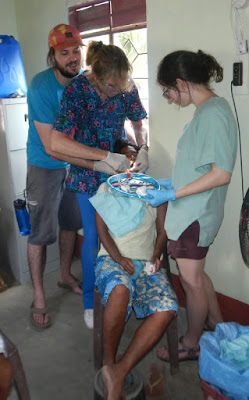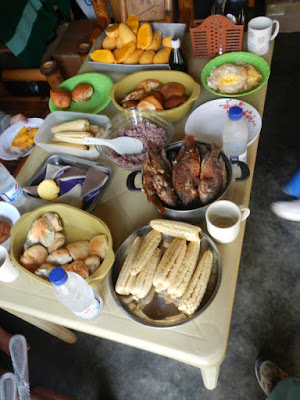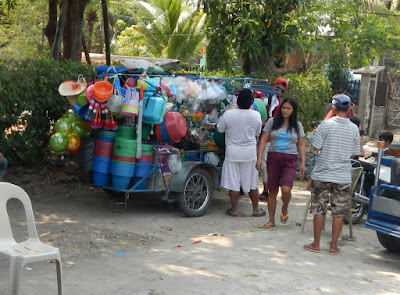Gloria and I have been
going on overseas dental service trips for almost as long as we have been practicing
dentistry. Many ask why.
We have joined or led teams all over the world.
In China to provide dental care for older citizens who survived Mao
Zedong’s Cultural Revolution. In
Cambodia treating local villagers at orphanages of children whose
parents were killed by Pol Pot’s Khmer Rouge.
In Vanuatu, blue water
sailing among the islands to provide care to islanders that have never had
access to dental care of any kind. In
Peru, joining a team of high school students drilling fresh water wells for families
and communities in the Amazon Delta.
In Thailand, working alongside a group who trenched and laid a 2-mile pipe line for freshwater so that the village girls weren’t enticed to Bangkok’s sex trade. Other trips to Mexico, Belize, India and Tonga to learn from the villagers how “simple life”, when without pain and disease, will impact generations to come.
In Thailand, working alongside a group who trenched and laid a 2-mile pipe line for freshwater so that the village girls weren’t enticed to Bangkok’s sex trade. Other trips to Mexico, Belize, India and Tonga to learn from the villagers how “simple life”, when without pain and disease, will impact generations to come.
And now the
Philippines. A great country consisting
of 7,641 islands and over 100 million people.
They speak 150 languages and hundreds of dialects. In many parts of the country medical and dental care is sparse or
non-existent. Since the trauma of WWII,
I believe, this country has changed.
Many Western luxuries have become curses. Specifically sugar in the diet.
As people are waiting to
have decayed and infected teeth to be removed they are drinking sodas and
sucking on hard candy. In conversation
and confrontation, we are told that this is their “culture”, it is “who they
are”. I disagree. Prior to the introduction of fast and
processed foods, these people’s diets weren’t causing the pain and disease I
see today. They have, for generations,
been surrounded by fresh fruit and have grown vegetables in their family garden
plots.
We discovered that many
parents aren’t aware of the relationship between sugar and tooth decay. Others, unfortunately are, but because sugary
foods and drinks are so prevalent; succumb to their child’s begging. Additionally, parents frequently don’t model
good oral health themselves.
One example: As I was ready to pull seven infected and
decayed teeth from a cute 8-year-old girl, I called for her mom to help calm
the child. When she came over, I
discovered she was my last patient from whom I had just removed eight teeth! Most people in their 40’s have already lost
the majority of their teeth. We saw few
grandparents, for they have no teeth.
Further, we saw about 150
patients in 3½ days, pulling around 300 teeth.
In total, I saw three fillings, three stayplates, (small partial
dentures to replace a few missing front teeth), and two “swedge crown”, more
like mouth jewelry. In other words,
except for those 7 people, none of our patients have either been to a dentist
in their lives, or may have gone, but just to have a tooth extracted.
So, dentistry is either
inaccessible or unaffordable. So what
can we do? Prevention. What’s to stop us
from encouraging these fine people to reduce or eliminate processed food and
sugars from their diets. They grow or
raise most of their food now. All villagers have a small garden and pens for
chickens, goats and pigs. Fresh fruit
grows on trees everywhere.
Education is a priority in
the country. I have seen many more
schools then churches. Perhaps this is
where we start. Provide the means and
training to educate the teachers and students in the importance of diet and how
it can affect their health and future.
The Filipinos need and deserve this.
It is the least we can do.
The Future? Our vision is to pursue working with the
local town leaders to introduce the children at school to a better
diet and oral care. If successful, our new friends will
lead healthier, happier and longer lives.






































